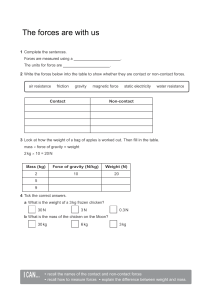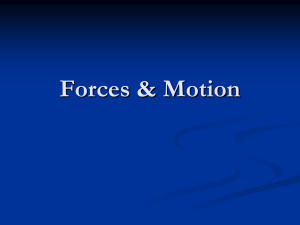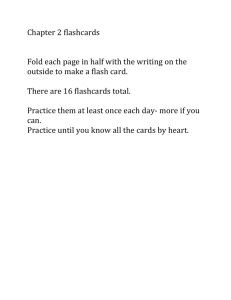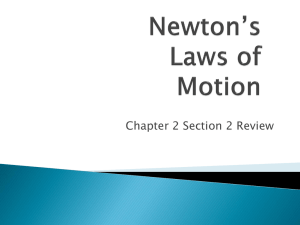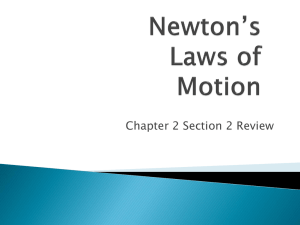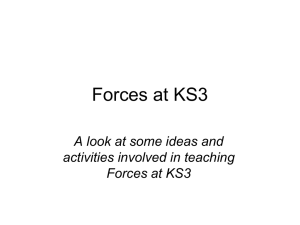Science Term 3 Schedule FORCES
advertisement
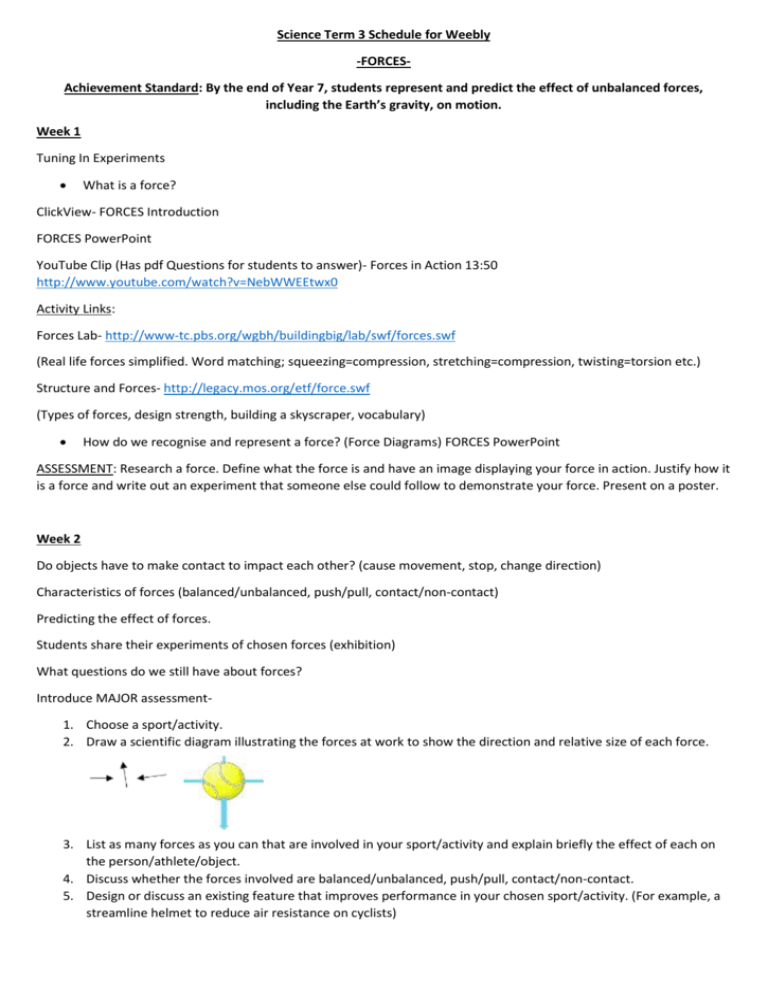
Science Term 3 Schedule for Weebly -FORCESAchievement Standard: By the end of Year 7, students represent and predict the effect of unbalanced forces, including the Earth’s gravity, on motion. Week 1 Tuning In Experiments What is a force? ClickView- FORCES Introduction FORCES PowerPoint YouTube Clip (Has pdf Questions for students to answer)- Forces in Action 13:50 http://www.youtube.com/watch?v=NebWWEEtwx0 Activity Links: Forces Lab- http://www-tc.pbs.org/wgbh/buildingbig/lab/swf/forces.swf (Real life forces simplified. Word matching; squeezing=compression, stretching=compression, twisting=torsion etc.) Structure and Forces- http://legacy.mos.org/etf/force.swf (Types of forces, design strength, building a skyscraper, vocabulary) How do we recognise and represent a force? (Force Diagrams) FORCES PowerPoint ASSESSMENT: Research a force. Define what the force is and have an image displaying your force in action. Justify how it is a force and write out an experiment that someone else could follow to demonstrate your force. Present on a poster. Week 2 Do objects have to make contact to impact each other? (cause movement, stop, change direction) Characteristics of forces (balanced/unbalanced, push/pull, contact/non-contact) Predicting the effect of forces. Students share their experiments of chosen forces (exhibition) What questions do we still have about forces? Introduce MAJOR assessment1. Choose a sport/activity. 2. Draw a scientific diagram illustrating the forces at work to show the direction and relative size of each force. 3. List as many forces as you can that are involved in your sport/activity and explain briefly the effect of each on the person/athlete/object. 4. Discuss whether the forces involved are balanced/unbalanced, push/pull, contact/non-contact. 5. Design or discuss an existing feature that improves performance in your chosen sport/activity. (For example, a streamline helmet to reduce air resistance on cyclists) Week 3 Simple machines (levers/pulleys) FORCES-Simple Machines PowerPoint Human Endeavour- How do machines help everyday life? Activity- Make a list of machines that you use each day to make life easier. Activity Links: SIMPLE MACHINES- http://tdcms.ket.org/kevsc/int/simpleint.swf ASSESSMENT: Fact File on one machine and how it works? How it assists our everyday life? Major assessment DUE Summary- by the end of the unit students will: Understand what a force is and will be able to give examples of main forces. Predict changes to objects as a result of forces at work. Describe the difference between balanced (stationary objects) and unbalanced forces (falling objects). Know some simple machines and how they help us. Content1. Forces can start motion, stop motion, speed up or slow down motion, change the direction of motion, change the shape of an object or have no visible effect at all. 2. Gravity is a non-contact force. Two other non-contact forces are magnetic forces and electrostatic forces. 3. Magnets can attract some substances including iron. 4. Magnets have a north pole and a south pole. 5. Magnets are surrounded by a magnetic field which can be detected by a compass. 6. An electromagnet is a coil of wire wrapped around an iron core. When an electric current is passed through the coil, the iron is magnetised. 7. Buoyancy is an upward push on an object by a fluid. 8. Surface tension is a force which acts at the surface of a liquid, making the surface behave like a skin. 9. Friction is a rubbing force applied to a surface by another surface. 10. Friction can be reduced by applying a lubricant between surfaces. 11. Gravity is the force that pulls objects towards the centre of the Earth. 12. Mass is measured in kilograms while weight is a force measured in Newtons (N). 13. Air resistance is an example of friction which acts on objects moving through the air. (Drag) 14. The motion of an object depends on the total force acting on it. 15. Bicycle helmets reduce the likelihood of head injuries to cyclists by allowing the head to stop more slowly on impact. 16. Seat belts prevent car occupants from continuing their motion when a car stops suddenly in road accidents.
